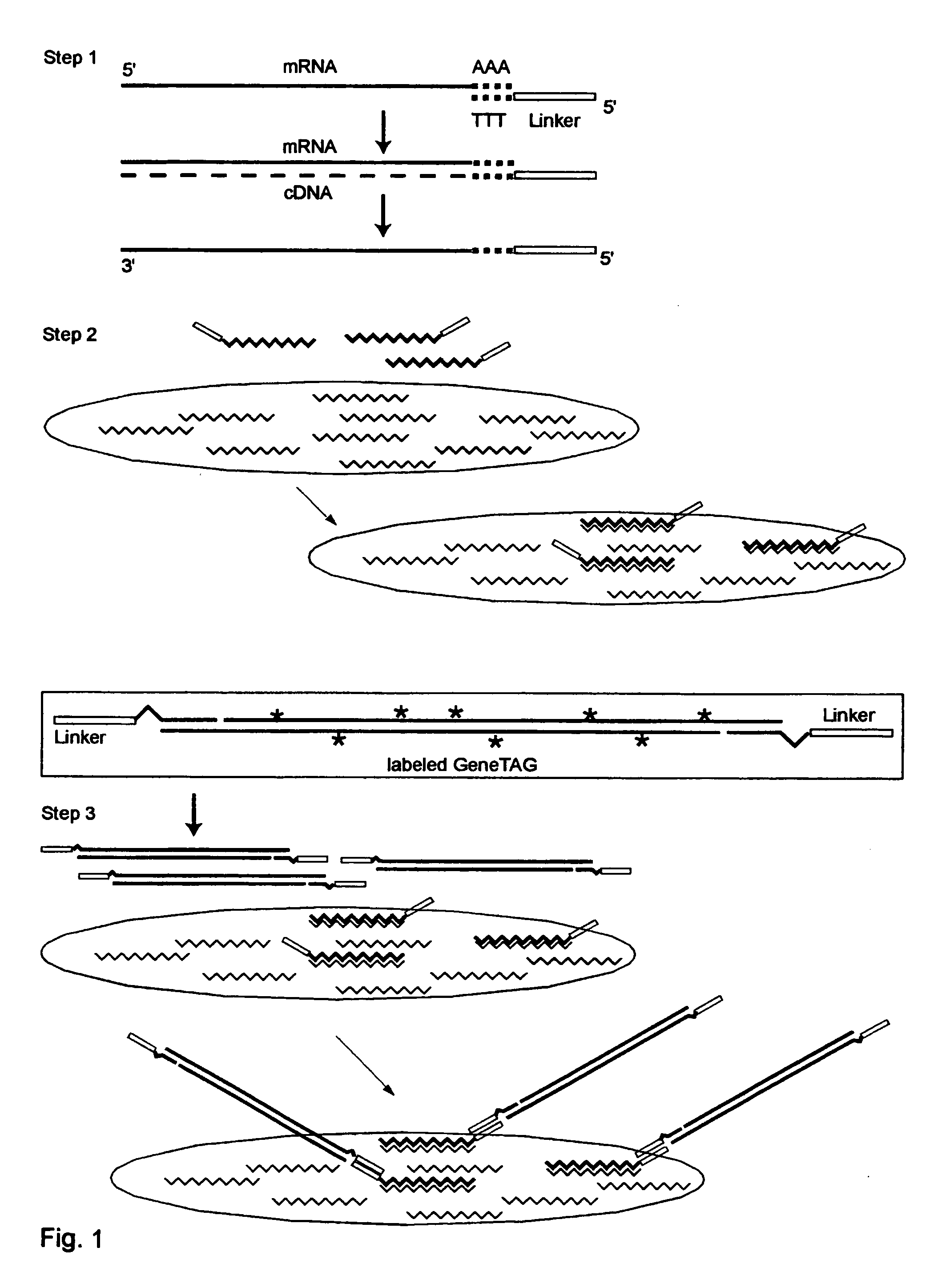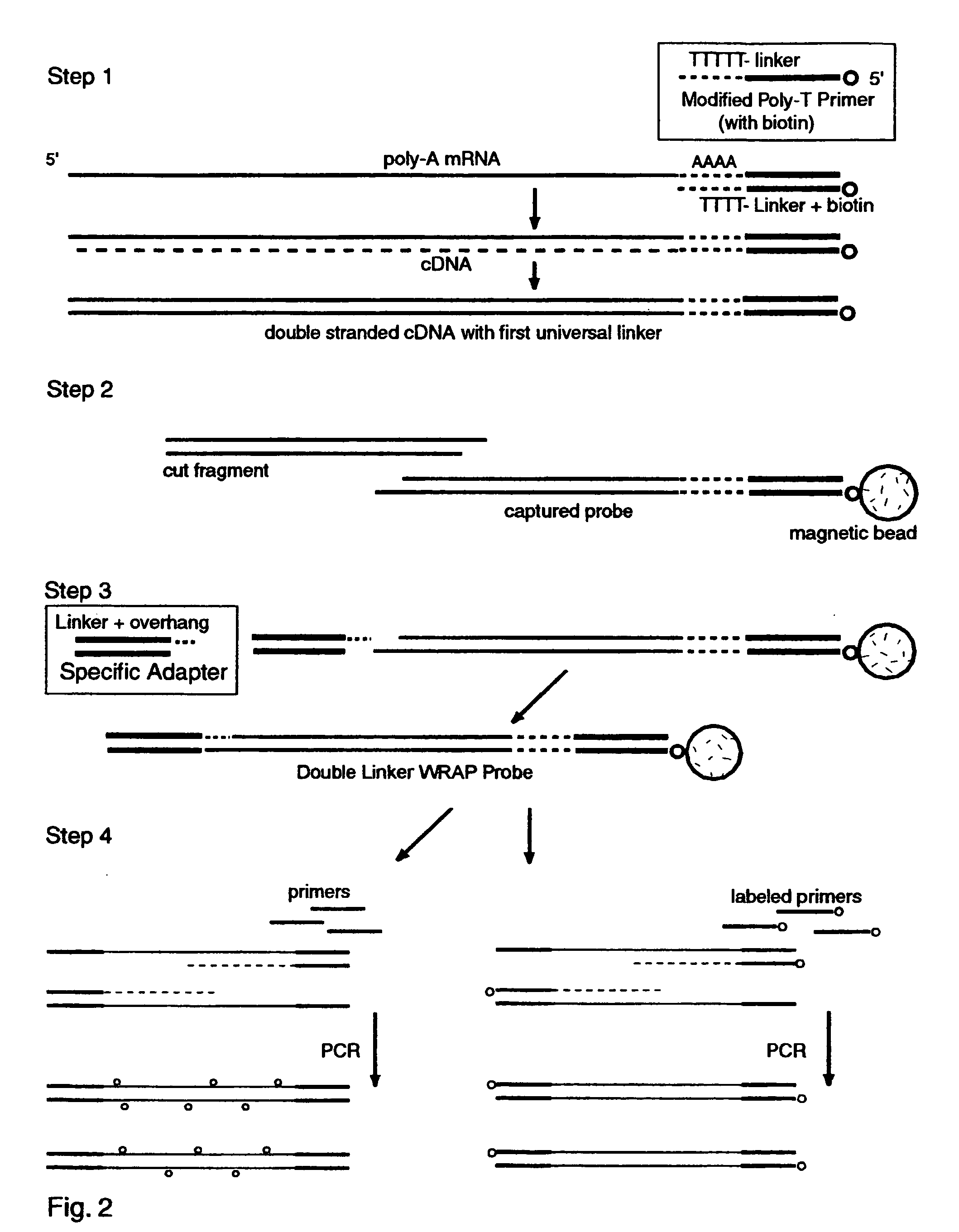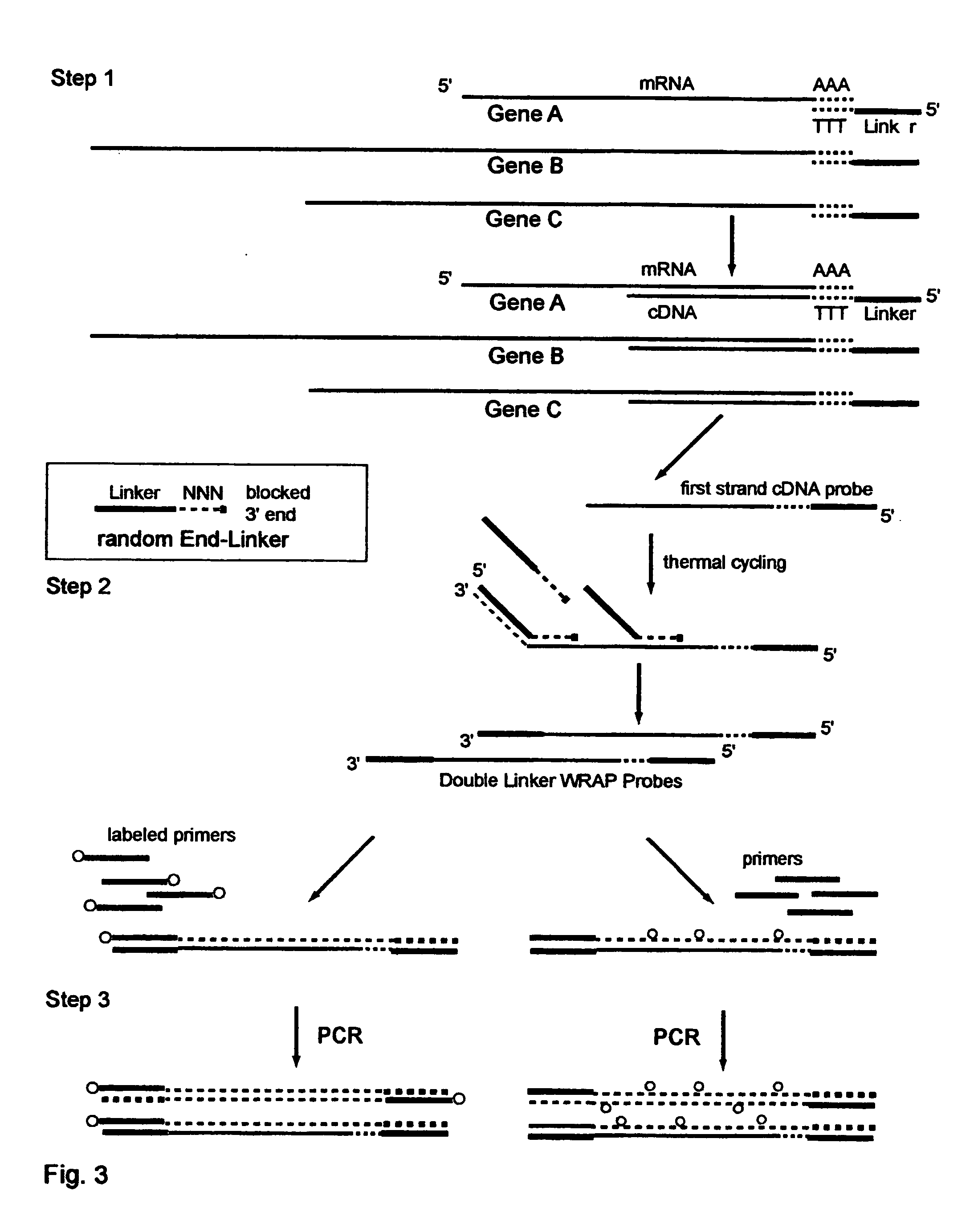Systems and methods to quantify and amplify both signaling probes for cdna chips and genes expression microarrays
- Summary
- Abstract
- Description
- Claims
- Application Information
AI Technical Summary
Benefits of technology
Problems solved by technology
Method used
Image
Examples
example 1
Sample Molecular Compositions of the Present Invention
[0223] Universal GeneTAG Linkers:
[0224] 1. Red 5'CTACGATACGATAGCGCCTAAGAGTAG (Seq. ID. No. 1) and its complement.
[0225] 2. Green 5'CCTAGACCTACGACATAGGTACCCTAC (Seq. ID. No. 2) and its complement.
[0226] 3. Blue 5'CGTAGAACTAGCACGCTACGTACTAGG (Seq. ID. No. 3) and its complement.
[0227] 4. Orange 5'GGCTATCGCTACGTAGACTAGACCTAC (Seq. ID. No. 4) and its complement.
[0228] Modified Poly-T Primer with red or green universal linker and anchor end:
1 (Seq. ID. No. 1, 5) 1. 5'CTACGATACGATAGCGCCTAAGAGTAG-TTTT-TTTTTTTTTTTVN (Seq. ID. No. 2, 5) 2. 5'CCTAGACCTACGACATAGGTACCCTAC-TTTTTTTTTTTTTTTVN
[0229] Double-Linker WRAP-Probe Set 1: Showing one probe strand with Red and Blue Universal Linkers, and with the variable target sequence indicated by S1 . . . Sn
2 (Seq. ID. No. 1, 6) 5'CTACGATACGATAGGGCCTAAGAGTAG-S1 . . . Sn-CCTAGTAC GTAGCGTGCTAGTTCTACG
[0230] Double-Linker WRAP-Probe Set 2: Showing one probe strand with Green and Orange Universal Linkers, ...
example 2
One-Linker WRAP-Probe Method
[0243] Total RNA is extracted from A549 lung cancer cells by standard methods. Reverse transcriptase (RT) is then employed to copy the mRNA transcripts to cDNA using a Modified poly-T Primer known as R-GT-RTP (Seq. ID. No. 8) having a 3' end of 15 poly-T's and a 5' end with a universal linker sequence that is similar to but differing in part from the Red Universal Linker of Example 1. For a comparative sample an alternative Modified poly-T Primer, known as G-GT-RTP (Seq. ID. No. 9) is used for the RT reaction to provide a second universal linker sequence wherein those sequences are also similar to but differing in part from the Green universal linker of Example 1.
[0244] The Examples 2 through 7 use these earlier versions of the red and green universal linkers in all their products, and thus the text of those Examples identifies them differently with the terms First-RED and First-GREEN in the descriptions to identify these sequence differences.
[0245] For a...
example 3
Double-Linker WRAP-Probe Method with Restriction Cutting and Adapter Ligation
[0249] Total RNA was extracted from A549 lung cancer cells by standard methods. A 40 ug sample was treated with reverse transcriptase (RT) and a Modified Poly-T Primer to make ds cDNA copies of the mRNAs with a first linker, to cut and capture the end fragments, and to add a second linker by ligating an adapter. The following steps were employed to make the probes and perform a chip analysis:
[0250] 1. Full length first strand cDNAs were made with one hour exposure to MuVL RT (Gibco) at 37 degrees C. using a Modified Poly-T Primer (Seq. ID. No. 16) having a 5' biotin capture moiety, an overlap linker sequence and a poly-T segment. Nucleotides including Cy3-dCTP (AP Biotech) were incorporated as described above to provide "green" labeling.
[0251] 2. Double stranded cDNA was made with E. coli DNA polymerase I, Rnase H and DNA ligase (Gibco kit) with a two hour exposure at 16 degrees C.
[0252] 3. The ds cDNAs wer...
PUM
| Property | Measurement | Unit |
|---|---|---|
| Length | aaaaa | aaaaa |
Abstract
Description
Claims
Application Information
 Login to View More
Login to View More - R&D
- Intellectual Property
- Life Sciences
- Materials
- Tech Scout
- Unparalleled Data Quality
- Higher Quality Content
- 60% Fewer Hallucinations
Browse by: Latest US Patents, China's latest patents, Technical Efficacy Thesaurus, Application Domain, Technology Topic, Popular Technical Reports.
© 2025 PatSnap. All rights reserved.Legal|Privacy policy|Modern Slavery Act Transparency Statement|Sitemap|About US| Contact US: help@patsnap.com



